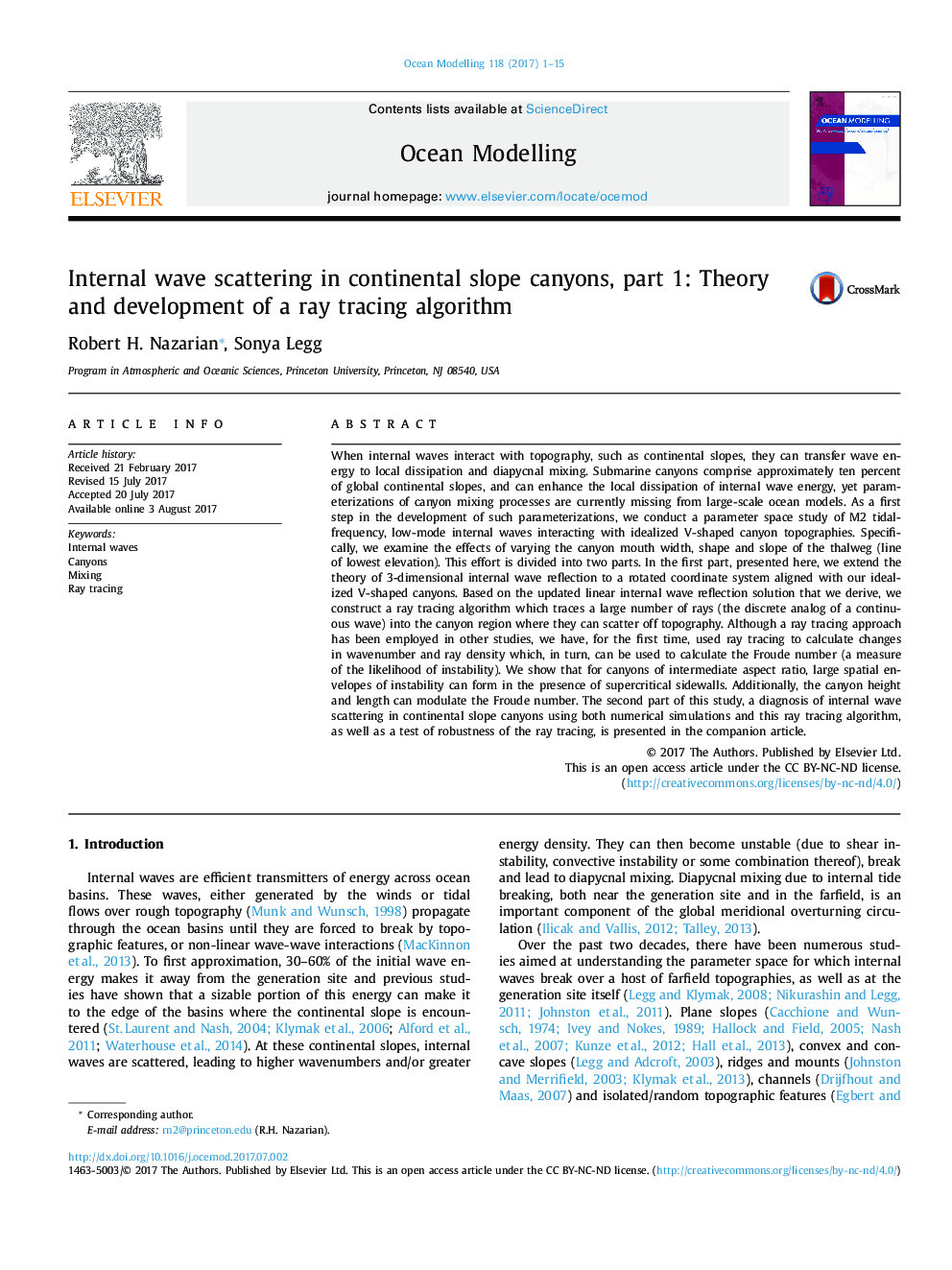| Article ID | Journal | Published Year | Pages | File Type |
|---|---|---|---|---|
| 5766397 | Ocean Modelling | 2017 | 15 Pages |
Abstract
When internal waves interact with topography, such as continental slopes, they can transfer wave energy to local dissipation and diapycnal mixing. Submarine canyons comprise approximately ten percent of global continental slopes, and can enhance the local dissipation of internal wave energy, yet parameterizations of canyon mixing processes are currently missing from large-scale ocean models. As a first step in the development of such parameterizations, we conduct a parameter space study of M2 tidal-frequency, low-mode internal waves interacting with idealized V-shaped canyon topographies. Specifically, we examine the effects of varying the canyon mouth width, shape and slope of the thalweg (line of lowest elevation). This effort is divided into two parts. In the first part, presented here, we extend the theory of 3-dimensional internal wave reflection to a rotated coordinate system aligned with our idealized V-shaped canyons. Based on the updated linear internal wave reflection solution that we derive, we construct a ray tracing algorithm which traces a large number of rays (the discrete analog of a continuous wave) into the canyon region where they can scatter off topography. Although a ray tracing approach has been employed in other studies, we have, for the first time, used ray tracing to calculate changes in wavenumber and ray density which, in turn, can be used to calculate the Froude number (a measure of the likelihood of instability). We show that for canyons of intermediate aspect ratio, large spatial envelopes of instability can form in the presence of supercritical sidewalls. Additionally, the canyon height and length can modulate the Froude number. The second part of this study, a diagnosis of internal wave scattering in continental slope canyons using both numerical simulations and this ray tracing algorithm, as well as a test of robustness of the ray tracing, is presented in the companion article.
Related Topics
Physical Sciences and Engineering
Earth and Planetary Sciences
Atmospheric Science
Authors
Robert H. Nazarian, Sonya Legg,
